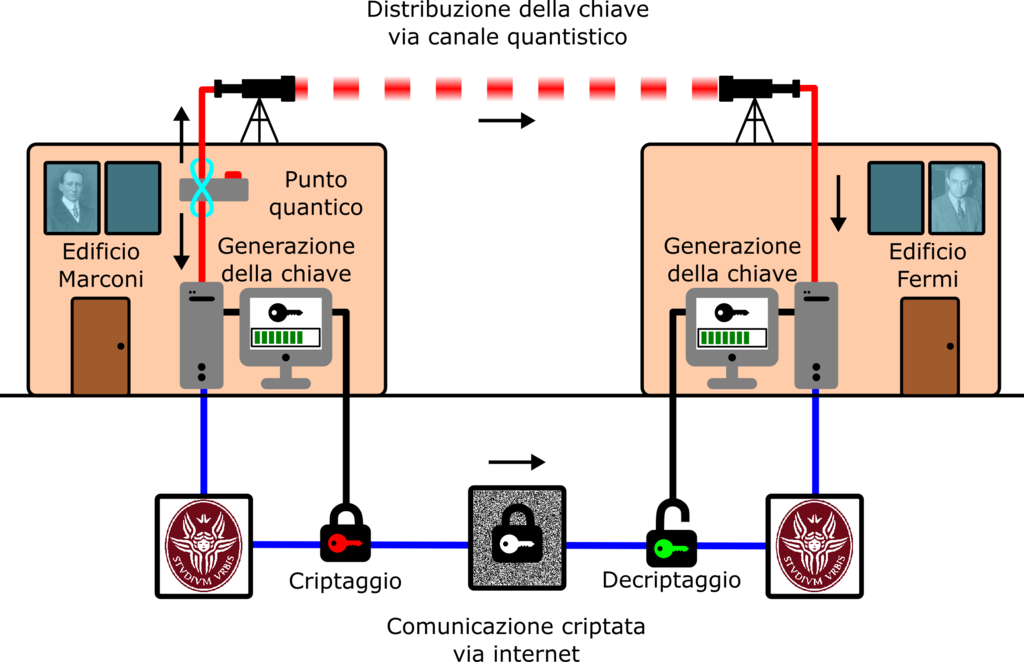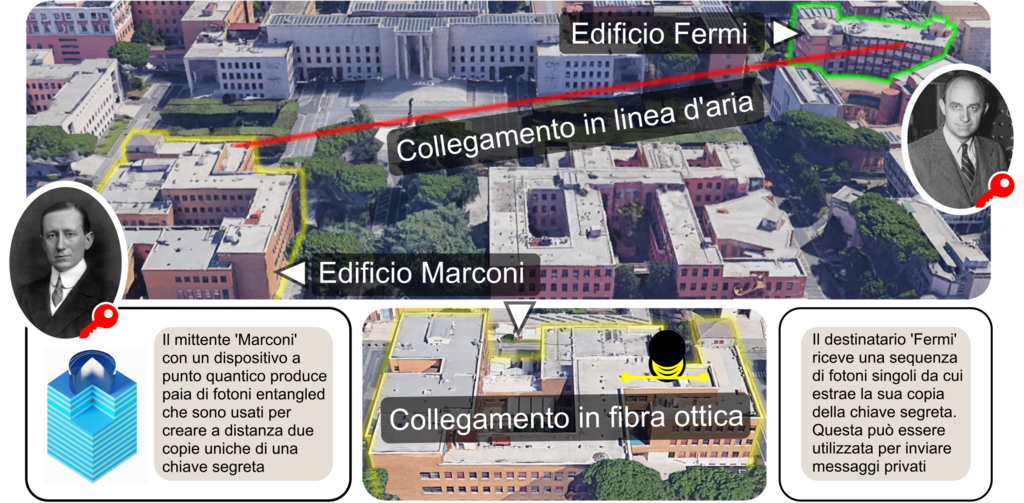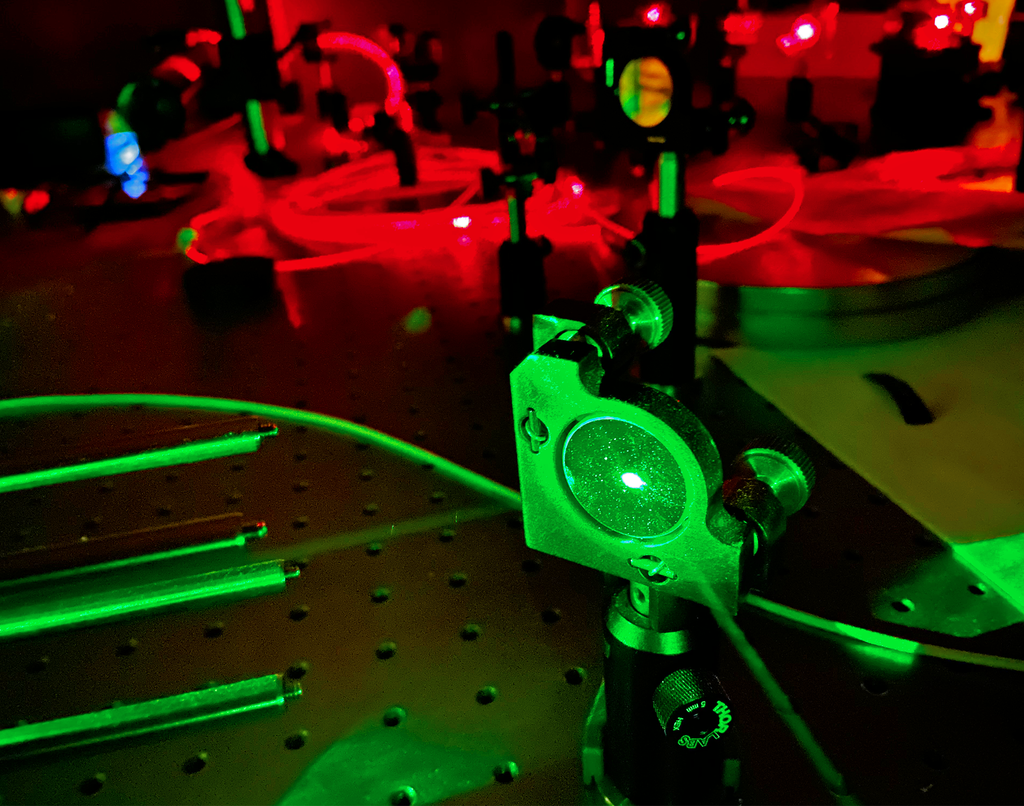
Encrypted conversations: when the laws of physics protect sensitive data
Remote communication is today’s norm, whether to contact friends or acquaintances privately or send sensitive data, such as in banking transactions.
Therefore, it is vital to create a means of protection to secure the exchange of data, safeguarding them from potential intruders. Indeed, today's channels of communication are inherently vulnerable, and their security is entirely dependent on the technological know-how of the intruder.
A solution to this problem has been found in quantum mechanics, which provides systems known as 'quantum key distribution, whereby the laws of physics itself guarantee the security of communication: in encrypted communication, two users use a secret key to encrypt any message which then becomes unintelligible to the outside world. This key is transmitted, as the name suggests, using quantum signals.
This process offers a guarantee of security because it is impossible to make a precise duplicate of an unknown quantum state, and therefore the presence of a potential intruder would be immediately noticeable. Although this type of solution has already been studied and experimented in recent years with the help of optical technologies, one of the greatest challenges is to optimise the generation of the quantum information carriers for this purpose, i.e. individual photons, and their peculiar property of correlation at a distance, called quantum entanglement.
Today, a new study of Sapienza University of Rome, a collaboration between two experimental groups of the Department of Physics, the Nanophotonics group coordinated by Rinaldo Trotta and the Quantum Lab group coordinated by Fabio Sciarrino, shows how it is possible to guarantee an additional level of security for data transmitted in a communication channel by using a new type of photon emitter, quantum dots.
Quantum dots are nanostructures thousands of times smaller than human hair and have been shown to generate very high-quality entangled photon pairs under appropriate conditions.
In order to achieve the results published in the journal Science Advances, the young researchers have created the first quantum communication channel developed on the Sapienza campus, an infrastructure for the airborne distribution of an encrypted key between two structures of the Department of Physics, the Marconi building and the Fermi building, more than 250 metres apart: the "Marconi sender", with a quantum dot device, produces pairs of entangled photons used to create two unique copies of a secret key at a distance, and the "Fermi receiver", which receives a sequence of single photons from which it extracts its copy of the secret key. This system can be used to send private messages, as in ordinary WhatsApp conversations.
The creation of such a channel in the air involved the need to counteract the environmental effects of misalignment. This obstacle was overcome through the application of an active light stabilisation method.
"One of the fascinating aspects of this experiment,' says Francesco Basso Basset, a research fellow in the Nanophotonics group, "was the creation of the transmission-reception system in the air between the two buildings, a novelty for us, as we typically carry out research in one laboratory room."
During the experiment, a pair of single entangled photons were separated and sent to both ends of the channel, allowing a secret key to be shared thanks to quantum correlation.
"In this process, it is possible to share a string of bits, which forms the secret key, by exploiting the quantum entanglement that is present in the two individual photons," says Mauro Valeri, a PhD student in the QuantumLab group. "Quantum mechanics provides us with the vital tools to understand if there are any intruders in the channel: if an intruder wants to appropriate the signals sent, we can immediately identify him by measuring the loss of entanglement in the lab."
"The novelty of this study," adds Fabio Sciarrino, "is the introduction of quantum dots into the field of quantum communication; In contrast with previous solutions, these devices are not based on a probabilistic physical process and can aspire to deliver photons 'on demand', a factor of fundamental importance for the experimental implementation of many remote quantum communication protocols."
"The quantum dot - concludes Rinaldo Trotta - has all the requirements to be one of the most promising emitters of optical signals in the field of quantum communication, and this experiment shows that its use in quantum networks of the future is a real possibility. We are convinced that this is just the tip of the iceberg, and this study will lead to numerous other discoveries; the next step is to increase the transmission speed, making quantum dots with higher and higher emission efficiency. The goal is to implement this technology at a global scale."
References:
Quantum key distribution with entangled photons generated on-demand by a quantum dot - Francesco Basso Basset, Mauro Valeri, Emanuele Roccia, Valerio Muredda, Davide Poderini, Julia Neuwirth, Nicolò Spagnolo, Michele B. Rota, Gonzalo Carvacho, Fabio Sciarrino and Rinaldo Trotta - Science Advances xxxxxxx (2021). DOI
Further Information
Rinaldo Trotta
Department of Physics
Rinaldo.trotta@uniroma1.it
Fabio Sciarrino
Department of Physics
Fabio.sciarrino@uniroma1.it





